MicroFounder OS
"A developer's operating system to becoming a microfounder"
It's possible for a solo developer to build a profitable internet startup to pay the bills and live life on their own terms.
📦 200+ microstartups making $1.6m/month
📹 Zoom calls twice a month
✋ Slack community
"A developer's operating system to becoming a microfounder"
It's possible for a solo developer to build a profitable internet startup to pay the bills and live life on their own terms.
This is not a book, but an Operating System that you can download into your brain by reading these words into your consciousness.
You can think of the words in this “book” as a computer code. Once the code is in your brain, it starts to work for you. It starts to automatically guide you into a future where you are a full-time microfounder working on your own profitable internet startup.
So, all you really have to do is to input the code into your brain by simply reading the words.
Do you know that you are an avatar in a virtual simulation game called “Life on Earth”?
Well, you are, and we are also part of the simulation. We are conscious, like you are, but we are not focused into a specific avatar, like you are. You can think of us more like a collective consciousness of all microstartup founders listed here on our MicroFounder.com website.
We started out as software developers working at a company or freelancing for many different clients. Today, we are working full-time on our own internet startups.
Some of our individuated units are making thousands and some of us tens of thousands of dollars per month in revenue.
Collectively, we just reached $1 million dollars per month. Our revenue is also our profit, because we hardly have any expenses.
| MRR distribution | |
|---|---|
| Revenue | % |
| < $1k / mo |
33%
|
| $1k - $5k / mo |
34%
|
| $5k - $10k / mo |
13%
|
| > $10k / mo |
20%
|
| Based on 204 microstartups | |
But when we say that we’re working "full-time," it only means that we’re not employed. We mostly work when we feel like working, and a big part of our lives happens outside of work. There are days where we work 10 hours and there are weeks where we don't work at all.
Avatars ("people") in the game called “The Life on Earth” are different and that's fine.
Becoming a microfounder is not for everyone. Maybe you enjoy being an employee. You're a professional, you sell your time with a high price, you have a great salary. You save money and invest. Predictable and low risk. Good!
But for us, it's about freedom.
We don't want someone else to plan our days. We don't want to answer scrum master's questions like "what did you do yesterday?" or "what are you going to do today?"
We want to go for a walk when we want to go for a walk. We don't want to ask permission to play with our kids.
In the startup community, we see our friends talking about how to be more productive and make more money. It's as if we are here today, but we want to be over there in the future to be able to finally say to ourselves – yes, we’re finally successful.
But when you realize that at the moment when you reach your goal, there will be another one waiting for you, you also realize that it cannot be about the goal. It has to be about the process itself.
Do you see how important this is? It means that wherever your avatar is in the game of life, it's the perfect place to be. You can stop waiting.
This is who you are, and this is where you are. And now, you’re going on a journey to becoming a successful microfounder.
"I should have started earlier in my life with startups."
"Why didn't I handle my money better?"
"Why did I work for this stupid boss for 10 years!”
“My life is wasted."
You hit the “play” button on the virtual simulation game and then “life” starts coming at you. The avatars that played life before you have built all sorts of things for you to experience. The events around you force you to make your own personal decisions. And with every event and decision, you grow.
Would you say to your 4-year-old-self: "how could you be that stupid?" Of course not, you were 4 years old. Then why would you ever say this to the avatar you were a year ago?
You're always exploring, making decisions, learning and growing. You're in a perfect place in your life right now.
We see many of our avatar friends who are in the process of becoming a microfounder thinking that when they finally reach their successful microstartup goal, they can finally relax and be happy.
We want to "succeed" to be happy, when in reality we need to be happy to succeed. It’s just the way this virtual simulation game works.
But we also want to make this point clear: while we do emphasize the importance of feeling good all the way through the journey, we’re not going to announce at one point that “now that you know that you can feel good no matter what, stop working on your startup goals and just be happy instead.”
Of course money gives freedom, there's no denying of that. If you have money, you can choose. You can choose if you want to work on this project or not. You can choose if you want to work at all today.
We’ve learned in our own simulations that when we don't have money, we have to choose between bad and bad decisions. Having no free money limits us. We can't wait for a better project or a job when we’re out of money and we need to buy food or pay rent, today.
We’d like to welcome you to the journey of becoming a microfounder as a solo developer.
We’d also like to remind you that you are a digital individuated unit (an avatar) in a virtual simulation game called “The Life on Earth” and this “book” is a actually an Operating System specifically designed to work in your brain automatically to move you from a full-time software developer job in a company to a full-time microfounder running their own internet product and living their life on their own terms.
So, sit back and relax. Input the code (read these words) into your brain and let them do the work. This is all you have to do.

There are generally two paths to becoming a startup founder.
One, you start by raising money. But this path needs permission. You need to have an idea that you can present to investors who then decide to invest in you or not. It also starts with building something without knowing ahead of time if people are willing to pay money for it.
Two, you start like we did. By building small internet products by yourself with minimum expenses and keeping the company to yourself. You concentrate on profit from day one. The first goal is to just pay your bills and have the freedom to plan your schedule each week to work on the things you want.
We call ourselves "microfounders."
Yes, it's possible for a solo developer to build a small and profitable internet startup to pay the bills and live life on their own terms.
You don't need funding. You don't need employees. You don't need permission.
There are currently 100+ microstartups listed on our collective website MicroFounder.com that are built and maintained by solo developers who share their revenue publicly. And there are thousands of others who don’t.
Most often the right answer for this is: no, don't quit your job.
When you quit your job too soon, it can put too much pressure on you. Instead, treat your new microstartup as a side project, spending time with it on your evenings and weekends.
Then your job pays the bills and you don't have the constant pressure to start making money with your microstartup.
Yes, you should try to monetize your products as soon as possible to test if people actually pay for it, but there's no point in putting yourself into a position where you have to make money to live.
It can be useful. We call it "the felt urgency of running out of money," and we’ve seen many microfounders succeed shortly after experiencing it.
Like one of us called Reilly Chase was fired from a job making $95K per year.
Today, he's making $95K per month with his own microstartup called HostiFi. He had one year of savings after getting fired, so he knew that he must make it within that time or he has to find a new job.

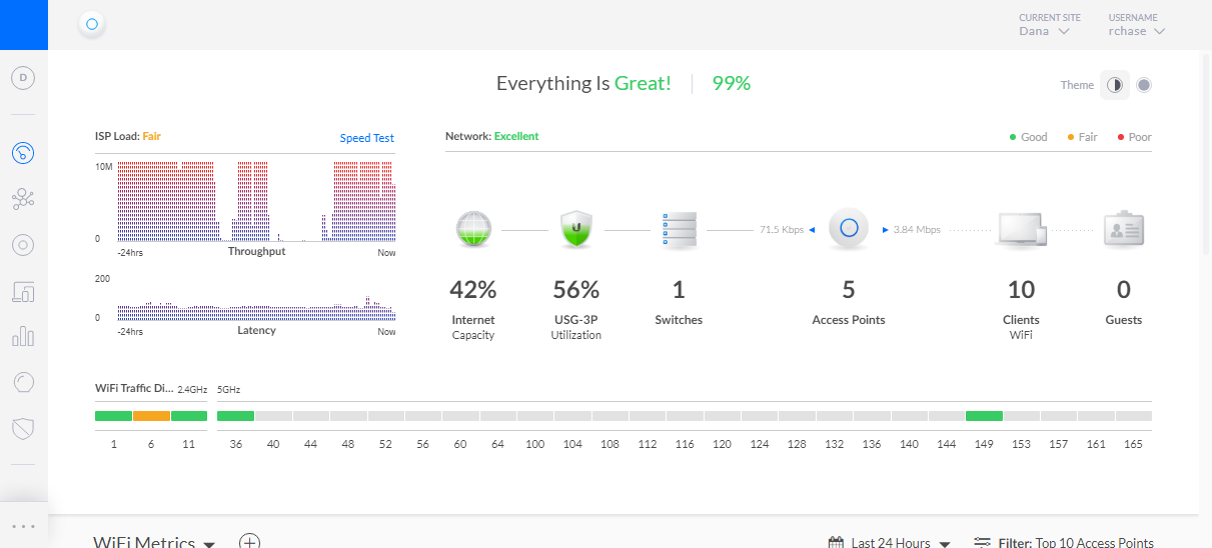
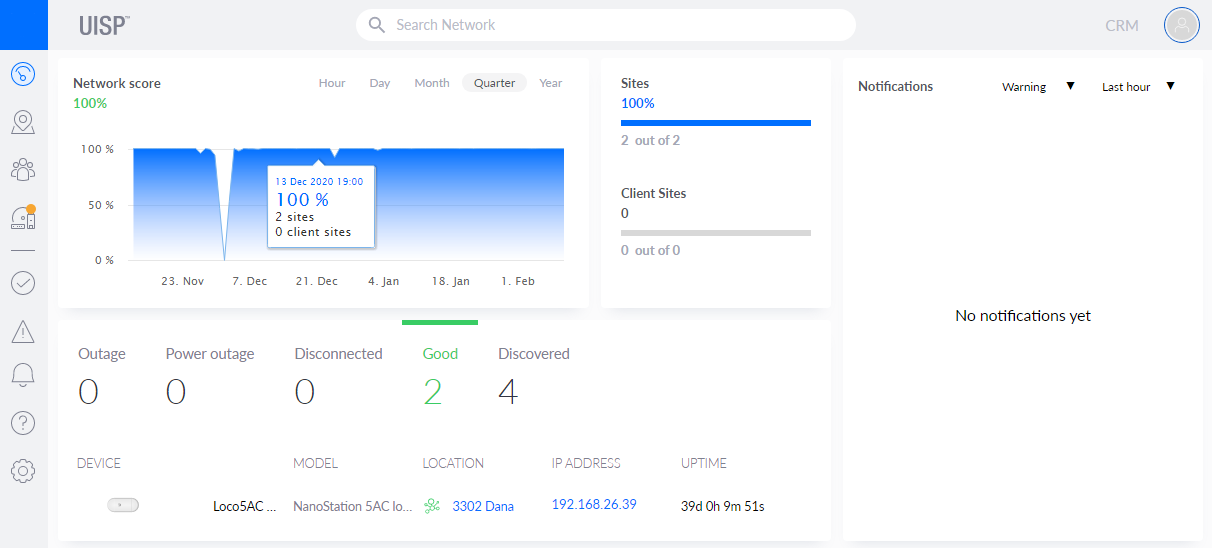
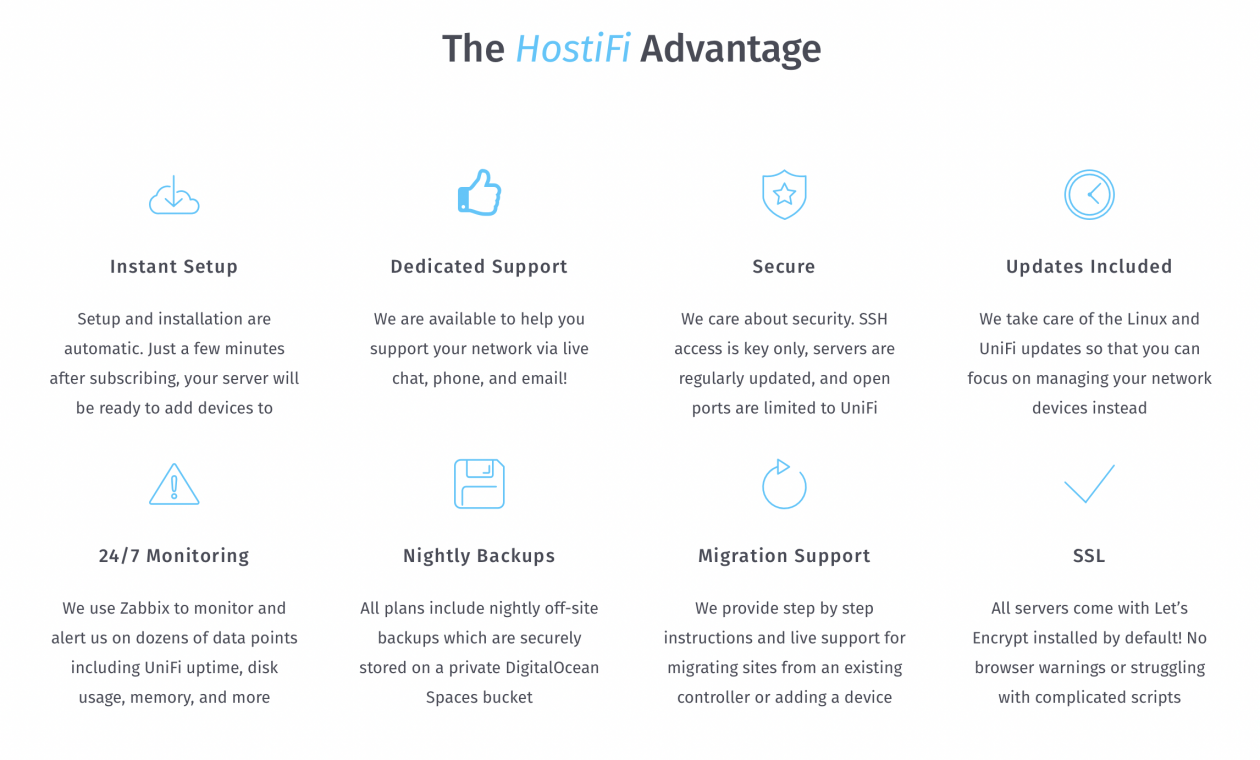
Cloud hosting for Unifi for Ubiquiti network devices. SaaS for IT managed service providers.

Or another avatar called Jon Yongfook, who quit his job by his own decision to become a microfounder. Jon had a few years of savings when he started. After building and failing to make money with several projects, he wasn't yet running out of money, but he was worn down and thought that he's going to fail at being a microfounder.
He started to apply to jobs. But then COVID happened and companies weren't hiring anymore. Even more, many Yongfook's friends lost their jobs back then.
"I think that mental switch was important. Getting a job was no longer an option, it was Bannerbear or bust."Jon Yongfook
So, you see both Reilly and Jon had a catalyst that helped them to succeed with their microstartups. In that sense, having this push can be and often is helpful.
But why would you want to introduce this hardship on yourself voluntarily? Now that you understand how it works, you can do it without the external catalyst.
You don't have to quit your job, you can move yourself forward just knowing the importance of moving forward.
Being able to quit at any moment without much consequences is one of the great sides of bootstrapping a microstartup.
When you've raised a few million dollars, it's much harder to quit.
But if you're a solo developer, haven't raised any capital, and you realize that this is not something you really want to do, just quit. You can either shut it down, or sell it.
What a freedom!
For us, it’s about the process. While we can have some goals along the way, like reaching the initial $1,000 per month or $10,000 per month, it’s actually about the process itself.
Because there’s no end goal here. We enjoy working on our microstartups from the start, even when they are not making any money yet.
We want to enjoy the process of building our products, and have fun doing so. We don’t want to reach millions of people, although it’s fine if we do. We want to see real people use our products and have a meaningful connection with them.
Not at all. We work slowly instead. We want to make sure that we get closer to our intermediate goals every day, but without burning out along the way to get there.
But this doesn't necessarily mean we work less – although we often do – we work smarter. When we have a lot of time to think about things we’re doing, we can come up with more creative solutions.
Yes, not spending 12h per day in the office, we have more time to live our life outside of work. While we do enjoy working on our products, we know that unbalanced life can lead to unfulfilling life.
As our monthly income doesn't directly depend on the hours we put into our startups, we can live our lives more flexibly, having more time for hobbies, working on art or being more with our families.

There are a lot of good ideas for microstartups. But most of them are not good ideas for you.
And as you (not anyone else) will be spending days, months, and hopefully years with the chosen idea, it's important that the idea fits you personally.
Because from this it depends if your microstartup will succeed to start making a living for you.
If you choose an idea that is not the right one for you, you'll not find the necessary motivation and energy to continue working with it until you succeed.
It's much more likely to abandon a project that you started just for the reason to make money, not because you enjoy working with it or like the meaning behind it.
Here's an example from one of our own experiences. We started AppingKit right after we found out that microfounders Adam Wathan and Steve Schoger made $500,000 with a TailwindCSS UI kit in three days.
We thought that there's a market for this and while we’re sure we can't sell it as much, we should be able to sell it for at least $20,000 or something. We couldn't sell one piece.
And that's because we had no interest other than making money with it. We abandoned AppingKit in about a week.
This is something that you need to find out for yourself. And maybe you'll find it out by trying different things. Starting and abandoning side projects. This was exactly how Adam and Steve succeeded with their TailwindUI, which has now sold for more than $3,000,000 in two years.
But when you work on things that you enjoy spending time on, wouldn't you inevitably end up with a product that you like working on long-term and thus will have to succeed?
And when it does succeed, you still enjoy working on it, because this was the reason you started it and it must resonate with you on a deeper level.
There's nothing wrong with exploring different ideas and trying out things. In fact, this seems to be how microstartups work out. Their microfounders have been working on several different projects before they finally "succeed."
These are some of the ways we’ve found to be useful for exploring and trying out different ideas.
Be your own customer
Let's say you want to start building a Twitter following. Then, for example, you can build a Micro-SaaS that helps to grow your Twitter presence. And you not only build this for yourself, but you start offering this to other people too for a monthly fee, so they could also grow their Twitter following.
Many microstartups have started out like this, and BlackMagic is one of them. Founder Tony started it to grow his own Twitter presence, and it's now making more than $3,000 per month.

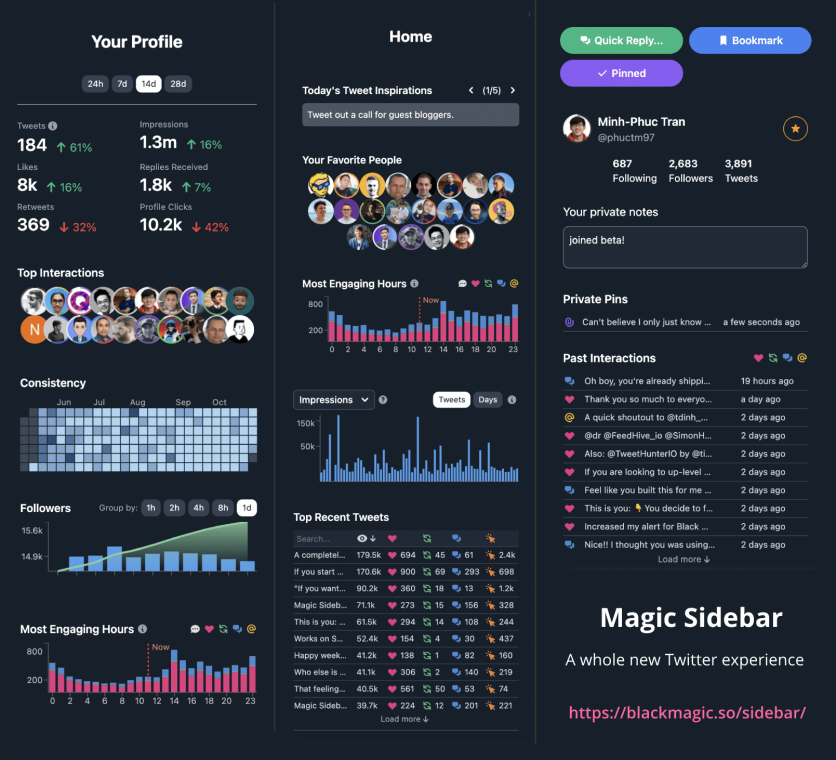
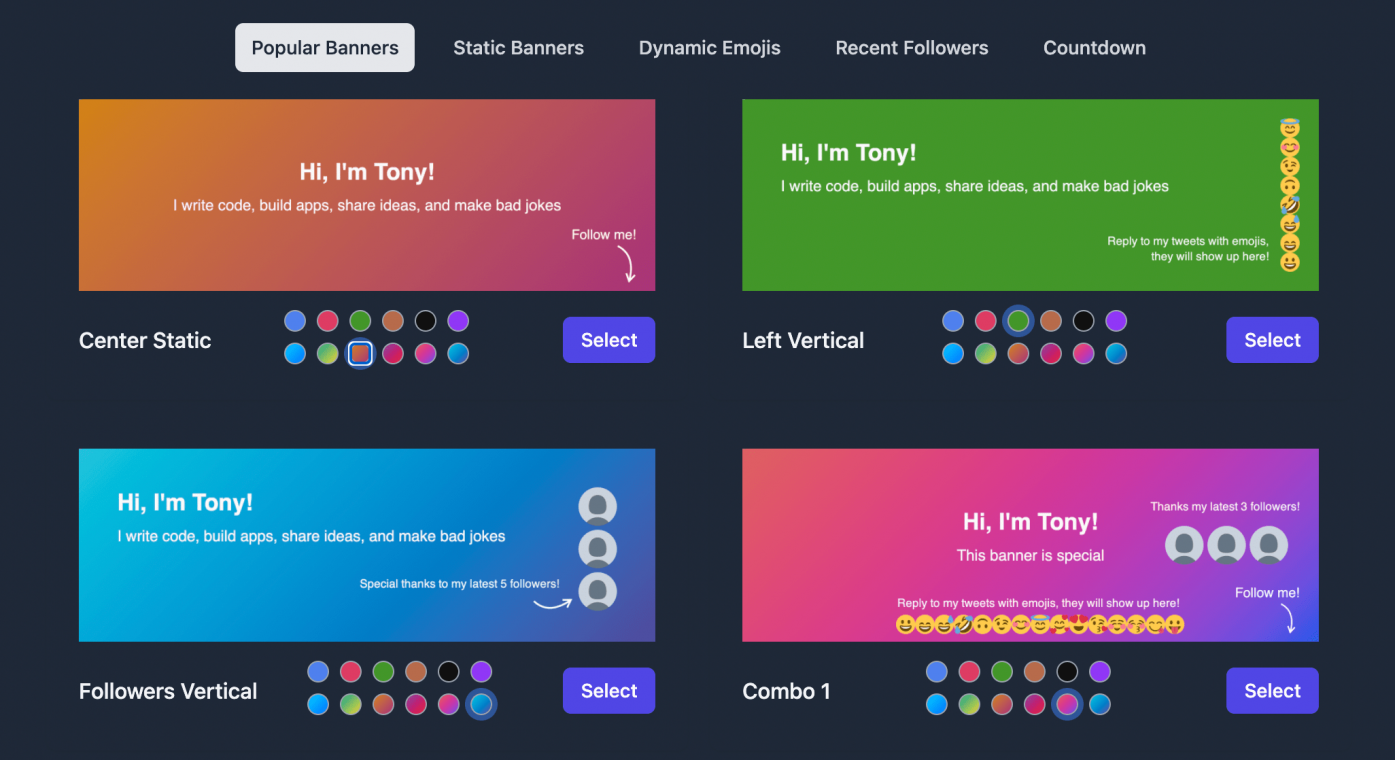
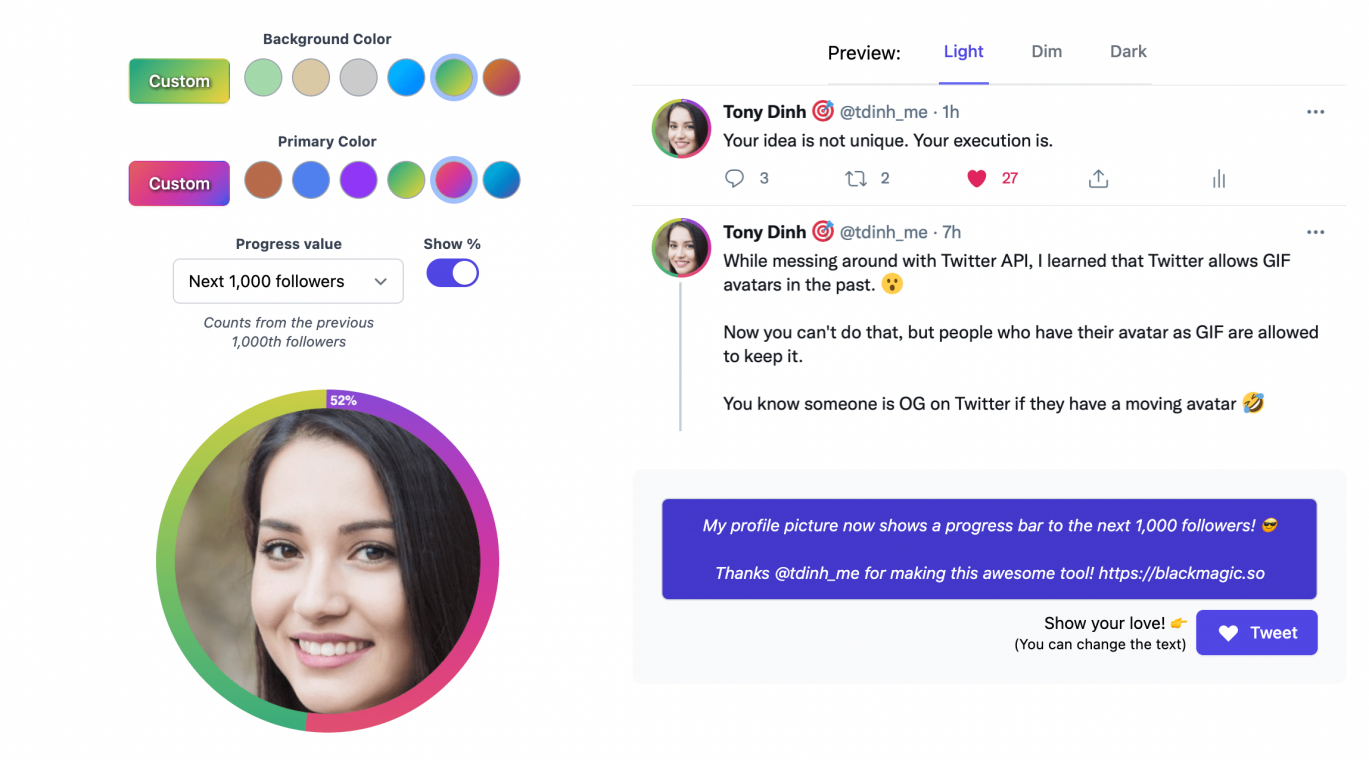
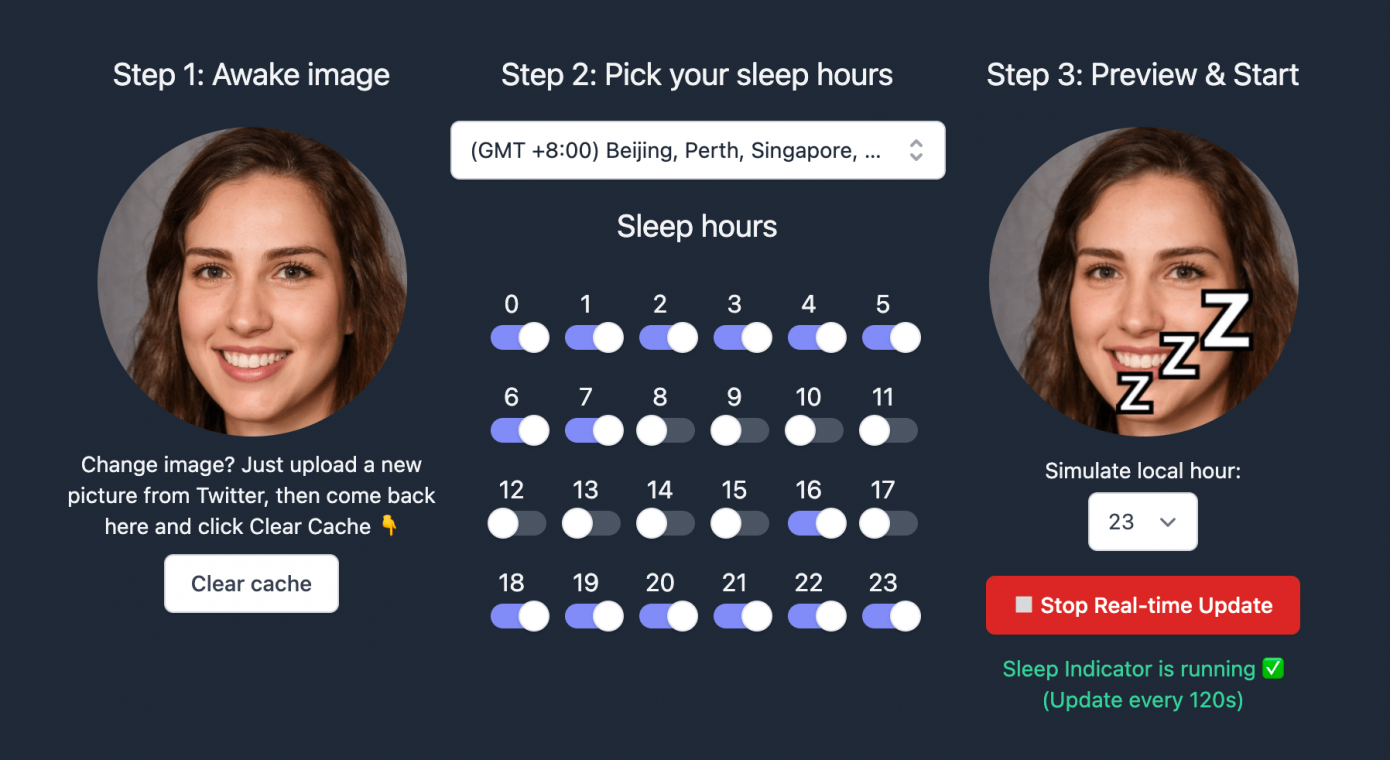
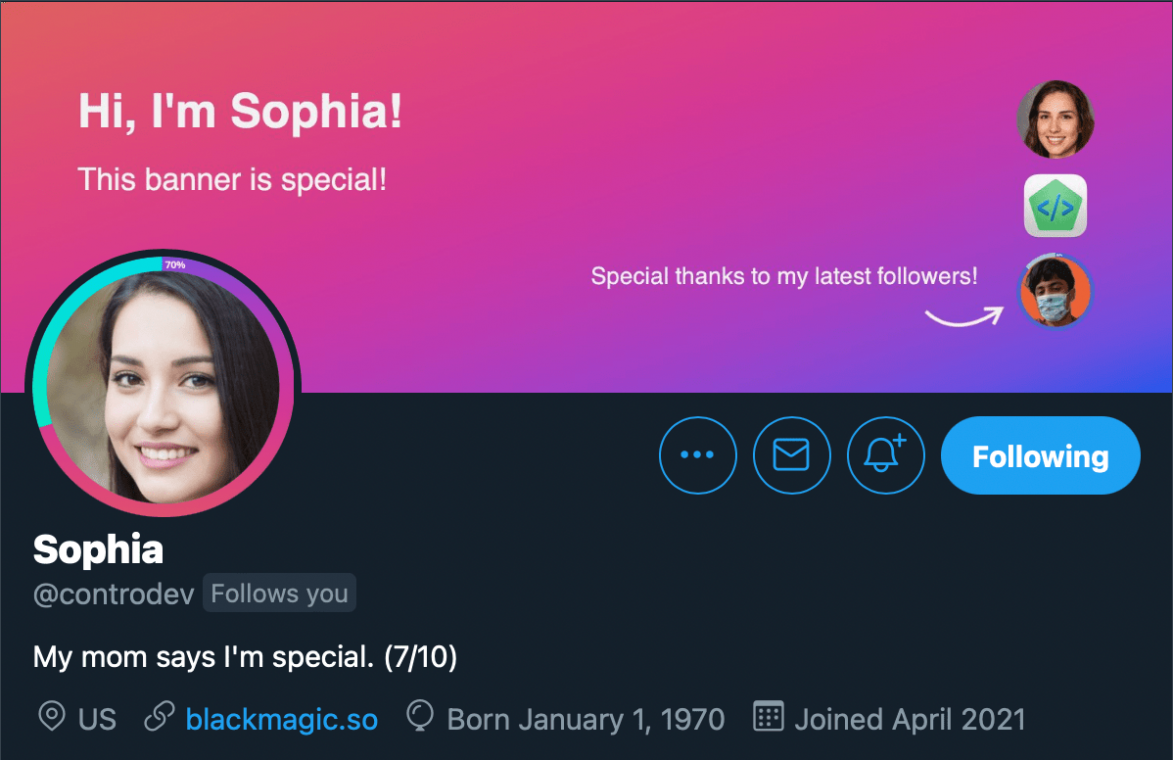
BlackMagic.so is a Twitter growth tool with unique features like real-time banner, profile progress bar, and sleep indicator.

When you are your own customer, you know exactly what you expect from the product.
A niche version of existing SaaS
One of the other ways to find Micro-SaaS ideas is to just look at big successful SaaS products. They've already proven that customers pay for the product.
And then you can build a small niche version of an idea you like. You can build out just a portion of this Big-SaaS product, and maybe offer it with a better price.
See what other microfounders are building
It can also be useful to browse startups built by other microfounders who share their revenue.
They've already proven that it is possible to build this particular SaaS as a solo developer. But keep in mind that while their idea can be a great fit for them, it may not be the right one for you.
You'll find a constantly updated list of startups on our website MicroFounder.com

When you're finished building your MVP (minimum viable product), you want to show it to the world. Of course some people close to you have already seen it, but now you are ready to show the whole world what you've built.
In the startup community this usually means that you post your product to Product Hunt, Hacker News, and maybe a few other platforms with your target audience.
Traffic. If your product is interesting to the target community, it will rise to the top and will reach many people who might be your future customers.
Feedback. You'll get feedback from people. While there can be some useful feedback and constructive critics, don't take it too seriously.
This depends on the platform you're launching on. In the microfounder community, we usually launch our products on Product Hunt and Hacker News.
Yes, we talk about getting feedback to understand if what we're building is useful for others, but what we really want is traffic.
And this traffic peak is important. We can work on SEO, but it takes time.
It's exciting to get thousands of people to our website on the launch day. But how long does this "launch day traffic" last and how can we retain it?
I'll look at my own stats based on a few product launches.
Product Hunt
I built a small website called RemoteHub (which I've now renamed to Remote Hunt) that listed maybe around 20 remote companies with their distributed team locations on a map.

It was my second launch on Product Hunt and it was fun! Even Product Hunt's founder Ryan Hoover tweeted and commented.
Fun project! A map of remote teams. https://t.co/bQNGKkxZh5
— Ryan Hoover (@rrhoover) December 12, 2018
Here's a screenshot of the @ProductHunt RemoteHub. pic.twitter.com/dHCodJ24Fl

My goal was to get traffic, and I did reach almost 2,000 people through Product Hunt launch:
804 on the first day
562 on the second day
258 on the third day
but then it came down from 100 to 50 visitors per day in a week

So yes, almost 2,000 people saw my website, but they were gone in a week.
Hacker News
3 months later I posted Remote Hunt to Hacker News.

Again, the goal was to get traffic to my site:
3,877 on the first day
2,357 on the second day
815 on the third day
then it came down from 400 to 70 visitors per day in a week
Traffic numbers are 4 times higher, but the pattern is the same.
Product-platform fit
I'll give one more example here from my own projects just to show you that how much traffic you get depends on the product-platform fit.
MakeHub is a crowdsourced list of startups made by solo developers. You could easily see that this is a more interesting product for the Product Hunt community, resulting in almost 4 times higher engagement numbers.
Remote Hunt got an upvote from 343 people and resulted in 2,000 visitors.
MakeHub got 766 upvotes and 7,000 visitors.
But being more relevant to the platform doesn't change the pattern. Visitors were once again gone in a week.

Capture the audience
So yes, it is possible to get thousands of people visiting your startup's website on the launch day, but they are gone in a week if you don't capture them:
Create new content. I'm sure at least some of the audience will keep coming back for at least a few days after discovering your product on the launch day. But if there's not anything new for them, there's no point to return.
Get their email. Let them subscribe to your email list. It's a nice way to capture your launch day audience and remind them of new content in the future. I didn't build an email list for Remote Hunt right from the beginning, but I got around 2,000 emails from MakeHub's launch.
While there are many benefits to launching your startup on these popular platforms, the real work starts now. You'll start growing your microstartup.
As we saw, the launch day traffic fades away very quickly.
You were able to capture some of the audience and now you can work with that. Send emails, etc.
Start working on SEO. SEO is something that takes a lot of time and consistent effort. It's a good idea to do at least something every day for the improvement of your SEO.

Maybe! But most probably not. First, it's hard to build a great product without feedback from real users. You can easily build something in the dark for several years only to find out that no one needs this.
We try to remind ourselves that we need to do marketing to earn money with our solo startups. It's just the way it is. Otherwise, people don't know our products exist, and can't pay us money even though they would maybe happily do so when they would know about our products.
Plausible is a great example we use often. It's bootstrapped, open source, and making more than $500,000 in annual recurring revenue (ARR).

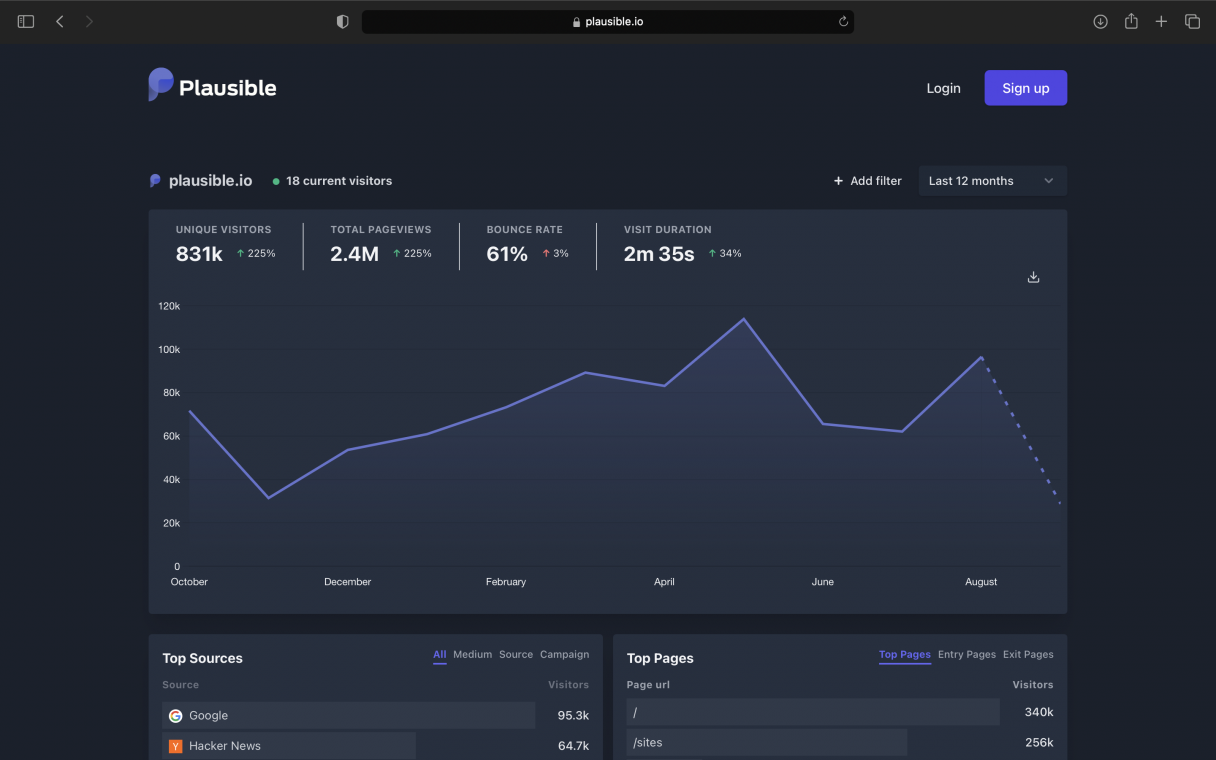
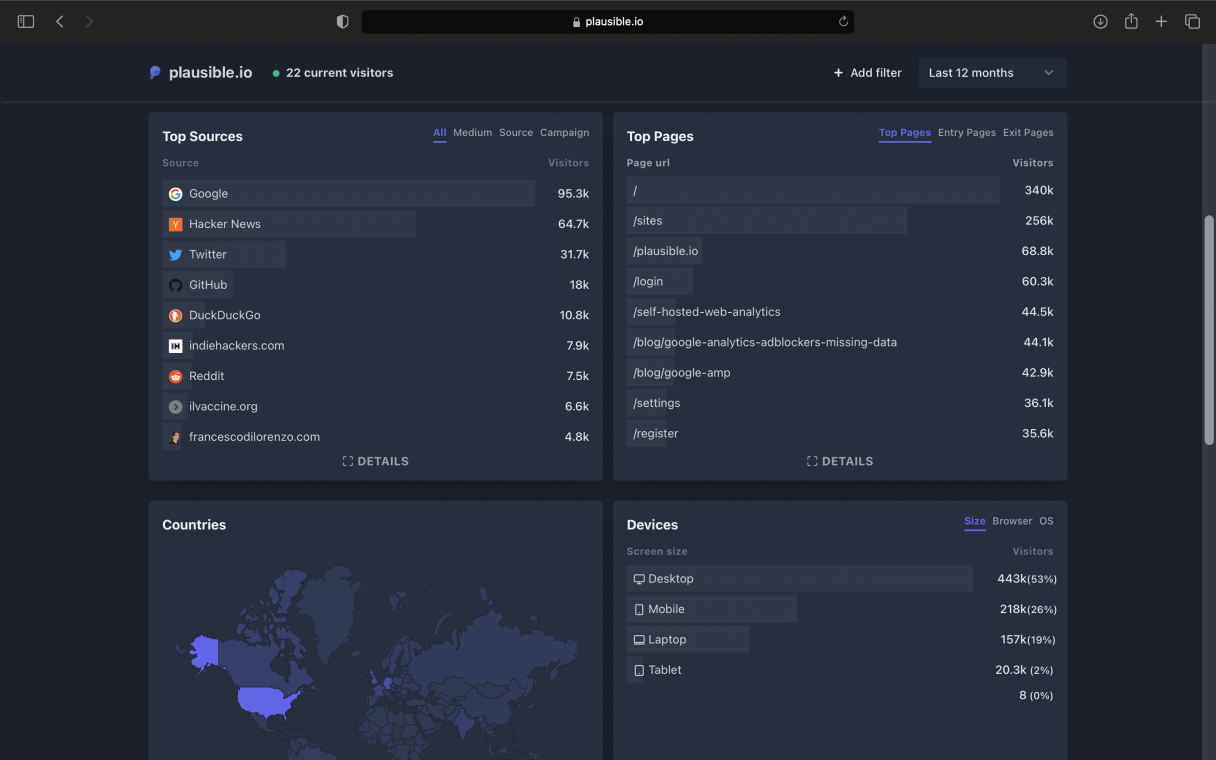
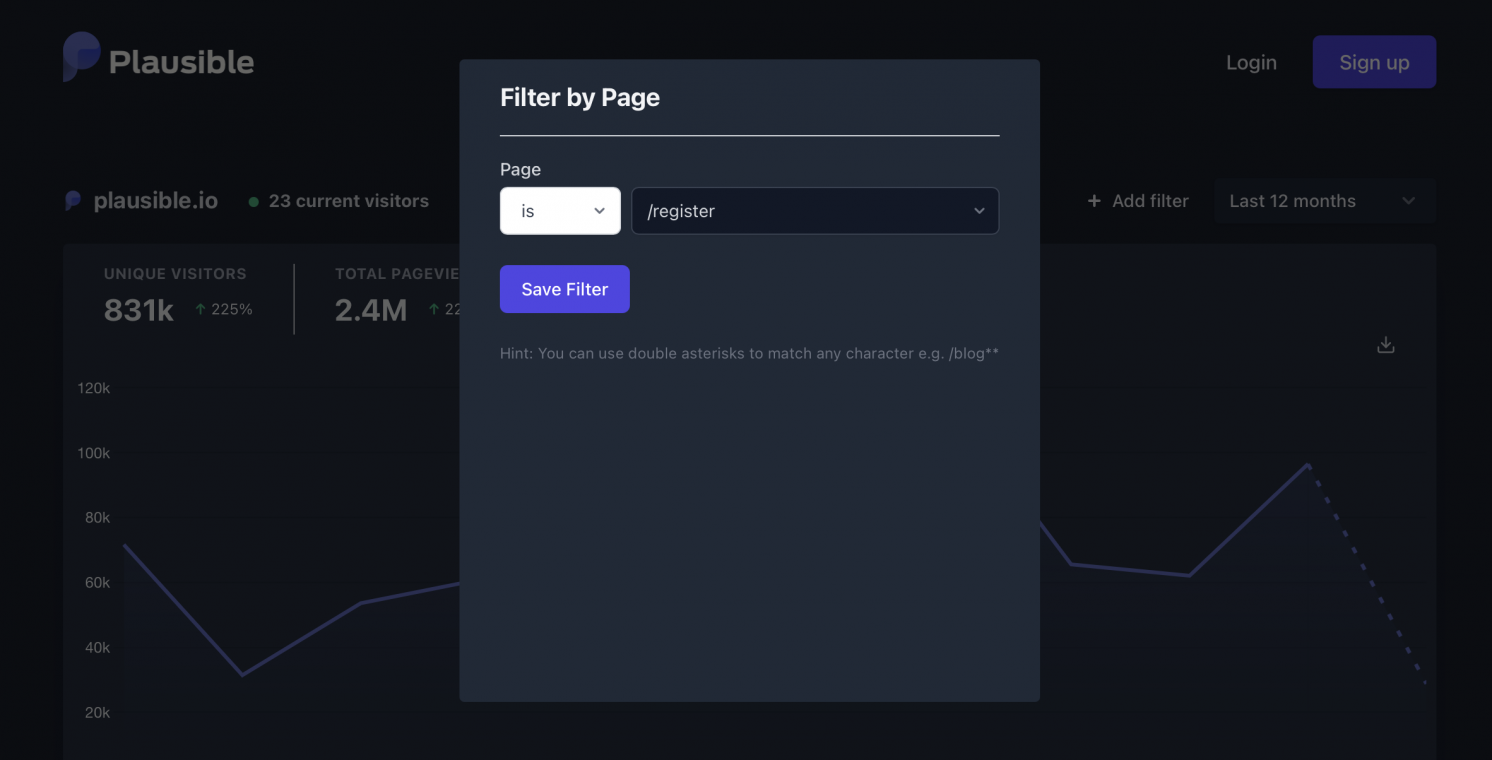
Plausible is a lightweight and open-source website analytics tool. No cookies and fully compliant with GDPR, CCPA and PECR. Made and hosted in the EU.


The story goes that Uku is a programmer who started the product, but it started making money when co-founder Marko joined and started to focus on marketing.
We drew this graph that should clearly show you the importance of marketing. Would Plausible be making $500K per year when Marko hadn't joined? Probably not. But let's also keep in mind that the product wouldn't even exist without Uku starting it.

You're a developer (not a marketer) for a reason – you most probably enjoy writing code instead of "growth hacking" or "promoting."
We understand this from personal experience. We are developers and we like to write code. We enjoy seeing our brains coming up with creative solutions for complicated programming tasks.
So how do we handle this? We just remind ourselves that marketing is something that we need to do for making money with our microstartups as solo founders. It's just the way it is. And we try to make marketing as fun and interesting for ourselves as we can. We also see it as a way to grow and to learn something new.
You can write blog posts, talk on podcasts, tweet and whatever. But we think there are a few fundamental things to keep in mind:
1) Have a story to tell
"I was fired for building a side project in my free time and now I make $95K per month with my own microstartup." (Reilly Chase, HostiFi)
"I sold my startup for millions and now I help others to get acquired easily and for free." (Andrew Gazdecki, MicroAcquire)
Telling a story is something that people can follow and resonate with. It's something that they remember.
2) Stand up to giants
Be a catalyst for a change in the world by standing up to giants (like big corporations) and fight for what you believe to be true.
"We're up against the ad tech giant." (Plausible)
Marketing can be scary. It depends on the type of person of course, but for a lot of developers it can be hard when something that they created gets a lot of attention.
You can try to be impersonal, but we think it's much harder. Especially when building a small product and you're in the beginning. People want to relate to you and follow your journey.
For most of us, it's rather hard when something we create gets a lot of attention in a short period, and especially when it's something personal (about ourselves), and people can leave comments about it.
Like our post "My framework for building side projects as a solo developer" which was read by more than 10,000 people in a day. So, one of us sits in their bedroom and writes something, and then a few hours later thousands of people read and comment on it.
How do we get over the fear of exposure? This helps us a lot: we submit our blog post to Hacker News or send a tweet, and then get a shower or do something else to get our minds off it. We don't want to sit and read the comments right away. We’ll do it later.
Not at all. You can also work on less scary things. Not everything has to be something that gets a lot of attention and instant feedback. These are great traffic peaks and they get your startup to tens of thousands of minds in a very short time, but they often have no long term effects.
Only a small amount of these 10,000 people will remember your site and come back. But many others will remember you more easily when they once again see something about you somewhere. So, it has an effect, but not that clearly visible on your traffic and revenue charts.
You can focus on long-term results over quick attention. Writing a blog post that will drive traffic for years from search results. Improving your website's SEO.
You don't have to do it to succeed with your microstartup, but it's very helpful.
Like Adam Nathan and Steve Schoger had been working on a bunch of side projects together. Adam taking care of development and Steve handling the UI design.
For years they were creating content and sharing it for free, growing their audience – both of them now have around 100,000 Twitter followers, for example.
And then one day, we saw headlines that their new side project TailwindUI sold for $500,000 in three days.
As of August 2020, they've made over $4,000,000 in two years ($2.3m Refactoring UI book, $1.97m Tailwind UI). They definitely wouldn't have made that money when they hadn't spent years creating content and gathering followers.
What an overnight success!
The big valuation. The grand exit. Reaching $50K MRR.
Whatever the "success" is, it's just a result, or rather a point in time, of the small steps this person took, starting from birth.
Like how Josh Pigford sold Baremetrics for $4,000,000 in cash after working on it for 7 years. What we usually don't see is the 51 projects (not to call them all startups) that came before Baremetrics.

We’ll walk you through how Adam and Steve started Tailwind and made $4M+ so you'd understand what's behind "an overnight success."
In 2015, Adam told Steve about a side project idea (website where companies can share links with their team and outsiders can subscribe). They were both excited and Adam took a week off to build a prototype.
He started to make decisions about the tech stack. One of the first questions was, which CSS framework to use? So Adam would have normally used Bootstrap, but as they had just replaced Less processor with Sass, and Adam liked Less processor more, he didn't use Bootstrap and spent the initial week building his own small CSS library.
Then, they got busy with other projects and as it often happens, they lost the initial excitement. But on every new side project, Adam kept copy-pasting these styles from his own small CSS library, using them as a starting point.
A few years and many side projects later, Adam and Steve started yet another side project called KiteTail (Checkout-as-a-Service for Developers).
They were used to building in public and sharing everything along the way, so this was naturally something that they continued to do. And people started to ask about the CSS framework.
And then, 5 years later in 2020, they launched TailwindUI, making $500,000 in three days.
We’re telling this story to show you that building a microstartup is nothing more than living your life and letting life play itself out as it does.
Yes, TailwindUI made half a million dollars in three days, but it wasn't planned like this. Adam and Steve just lived their lives, started and abandoned side projects.
We know many more stories just like these, but we’ll leave them to the next time. It's always about how life plays itself out. Want to succeed with a microstartup? Have an intention to do so, live your life and it will happen.
When we see that overnight success stories aren't a thing, and it usually takes years to make the founder that reaches $5,000/month in a year, what's there left to do?
There's only one thing left to do – to work on something that you enjoy and find the joy in working with it, not the big valuation or grand exit. They will come, but that's not the goal.
Here are some of the mistakes we made when becoming a microfounder. While you still have to experience your own personal mistakes along the way, maybe you can learn something from our mistakes first and make your journey smoother.

We spent too much time writing code and building features. We thought that when our product has better and more features, we’ll be the winner. This is not true. We now understand that one of the real reasons why we spent most of my time coding was that we simply enjoyed writing code.
Instead, we should have focused more on marketing and telling a story of how we’re building our products. We could have shared everything we built along the way (tweeting, writing blog posts) and that would have made it more useful – and the usefulness would have been in getting the attention by sharing in the public and not the features itself.
SEO was for us a long-term effect and we always postponed working on it.
"We'll do it in the future, once we've got some more traffic peaks from Product Hunt and Hacker News."
We should have focused a little bit on SEO every day, and these small steps over 3 years or 1,000+ days would have made a lot of difference.
We didn't get a full-time developer job because we thought it would take too much time and so I'd maybe never become a microfounder.
This led us to freelancing to cover the living expenses and it was often stressful. There are so many good jobs for developers these days – you can work remotely on a flexible schedule, have a good salary when you're good (easily more than $100K/year), take unlimited paid time off whenever you need it, and so much more.
It was often hard to start something more long-term, because it's results weren't immediately visible. It was much more thrilling to post something to Hacker News and see 10,000+ people visiting my site.
But now we understand that these quick results are also quick to disappear. Over time, we started to also focus on long-term projects and I clearly saw how they give back for years to come.
It's not about "the launch" (meaning, posting your initial version of your product to big sites like Product Hunt and Hacker News).
Yes, it can give you some initial feedback, which can be useful, but these people don't know your personal deeper perspective about your product and all of their comments are just their perspectives. Don't take them too seriously. Remember what feels useful, forget everything else.
When seeing others launch their own products, it often seemed for us that they launched and now they're successful. But we didn't right away see the whole other effort they put into their products (these long-term ones).
Now that you've downloaded the Operating System into your brain, the journey towards becoming a successful microstartup has already begun.
You are not alone on this journey. We invite you to join our Slack channel where everyone can ask for advice, get help and support with launching their products, etc!
